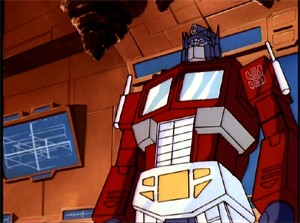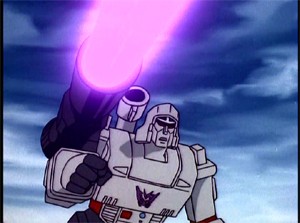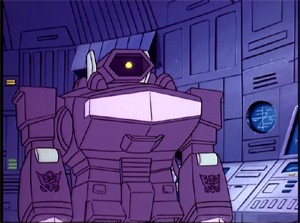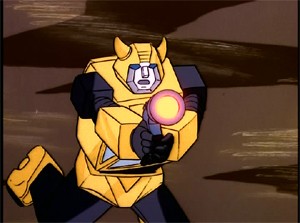 While it's not manga from Japan we enjoy all forms of graphic novels, so when the opportunity arose to check out StarCraft: Ghost Academy from Tokyopop, I naturally took it. Based on the hyped and then dead game by Blizzard, Ghost Academy comes out next week and acts as a sequel to the novelization of StarCraft: Ghost. If you're unfamiliar with the game franchise then all you really need to know is that it's science fiction and features all kinds of ass-kicking and aliens. Ghost Academy focuses more on the human aspect, and more to the point, those with special psychic powers.
While it's not manga from Japan we enjoy all forms of graphic novels, so when the opportunity arose to check out StarCraft: Ghost Academy from Tokyopop, I naturally took it. Based on the hyped and then dead game by Blizzard, Ghost Academy comes out next week and acts as a sequel to the novelization of StarCraft: Ghost. If you're unfamiliar with the game franchise then all you really need to know is that it's science fiction and features all kinds of ass-kicking and aliens. Ghost Academy focuses more on the human aspect, and more to the point, those with special psychic powers.Now, before I dig too far into the review of the material housed within the pages of this book I wanted to take a second to bring up the writing style and artwork. Keith R.A. Decandido penned the script here and fans of the franchise will recall his work on the Ghost novel, Nova. He does a nice job here and the dialogue flows and pops, imbuing characters with personality. Fernando Heinz Furukawa handles the visual side of things quite deftly with some great designs and loads of detail. With that being said I must admit that while his style is very nice, a lot of the faces look exactly alike, but I should digress from nitpicking. With that out of the way, on with the review!
Much like the focus of the dead StarCraft Ghost game, Ghost Academy sees a Ghost cadet named Nova as its main protagonist. Nova is particularly promising in many regards. For starters she has a PI score of 10, which is literally off the charts by comparison to some of the other members in training. Another thing she has going for her is her quick reaction time which has saved her hide on more than one occasion. The only downside we see with Nova in this installment is the fact that she's not necessarily a team player.
While Nova stands front and center in the graphic novel she's surrounded by a host of other characters who make up what's known as Team Blue. Tosh is their leader, Kath is another senior member, Lio is just kind of there, and Aal is the newest recruit. Each of the characters brings some type of dynamic to the story here. For instance Lio is addicted to a drug called Hab and just sucks all around, Aal is a cocky privileged kid, and Kath and Tosh have a relationship. There are some other characters that share some of the spotlight in this novel as well, but in all honesty the main events follow Nova and her development.
After reading through this first installment I have to say that I truly hope the series is headed somewhere. Why do I say that? Well, nothing really happens here! It's all set up, introductions, and development of the characters, but there's really no concrete story. Sure there are little pieces of conversation that hint towards something that may be coming down the road, but the entire volume consists of Team Blue going through training courses. That's it. Even then we get badgered on the fact that Nova is better than everyone else and she'd be so much better if she would just display some teamwork.
The story so far just doesn't feel balanced and there aren't many dramatic moments. Sure we get to see Nova blow some stuff up, Aal kick some butt with kung fu, and Lio have a bad reaction to hab (Drugs are bad okay? Just say no!), but that's pretty much it. Still, there are plenty of references to the rest of the franchise and diehards will appreciate the lingo and bits and pieces of information that pop up about other species. In the end this is one that is geared more towards StarCraft fans, and not necessarily something that newcomers will be able to appreciate. Even so the story here is kind of flat and the first volume doesn't exactly take off. Here's to hoping the next installment will push things to the next level!
StarCraft: Ghost Academy receives 2.5 out of 5 PI.






 Back in July, Shout! Factory released a boxed set of one of the most iconic cartoon television series of all time. With sixteen DVDs, all 98 episodes, cool pack-ins, and hours of bonus content, the Transformers: 25th Anniversary "Matrix of Leadership" Edition was a force to be reckoned with. It was available through Shout! exclusively for a short time and will be hitting other retailers this week. At an MSRP of $169.99 the price tag is kind of hefty, especially for fans who own the original Rhino release, but the cost of admission is oh so worth it. This is one of the most revered shows from the 80's and it is one of the cartoon franchises that actually withstood the test of time.
Back in July, Shout! Factory released a boxed set of one of the most iconic cartoon television series of all time. With sixteen DVDs, all 98 episodes, cool pack-ins, and hours of bonus content, the Transformers: 25th Anniversary "Matrix of Leadership" Edition was a force to be reckoned with. It was available through Shout! exclusively for a short time and will be hitting other retailers this week. At an MSRP of $169.99 the price tag is kind of hefty, especially for fans who own the original Rhino release, but the cost of admission is oh so worth it. This is one of the most revered shows from the 80's and it is one of the cartoon franchises that actually withstood the test of time. Transformers' original series ran from 1984 to 1987 and wrapped up with four seasons, 98 episodes, and an animated movie (which is not included here unfortunately). The show, like many others, featured episodic adventures from week to week with the occasional overarching plotline to give things a more thematic feel to them. The quality of the episodes ranged dramatically as you'd expect and there was something of a decline towards the latter half of the series. Still, no matter how bad the episodes got they were entertaining and worth celebrating for the sake of nostalgia.
Transformers' original series ran from 1984 to 1987 and wrapped up with four seasons, 98 episodes, and an animated movie (which is not included here unfortunately). The show, like many others, featured episodic adventures from week to week with the occasional overarching plotline to give things a more thematic feel to them. The quality of the episodes ranged dramatically as you'd expect and there was something of a decline towards the latter half of the series. Still, no matter how bad the episodes got they were entertaining and worth celebrating for the sake of nostalgia. After the premier, the first few episodes of the series feature some formulaic one-shot stories that depict Megatron concocting ways to destroy the Autobots, or endanger Earth. Naturally the good guys prevail in the end in just about every episode. This is typical for something of the 80's Saturday morning variety, but things get interesting as more characters are introduced. In the episodes that follow, Skyfire and the Dinobots (Grimlock, Slag, and Sludge) are brought into the fold and shake things up a bit. This is followed by another solid three-parter entitled, "The Ultimate Doom", which sees Megatron gaining control of humanity via mind-control and working on bring Cybertron into Earths' orbit. Let's just say he dreams big and has the resources to pull something like this off.
After the premier, the first few episodes of the series feature some formulaic one-shot stories that depict Megatron concocting ways to destroy the Autobots, or endanger Earth. Naturally the good guys prevail in the end in just about every episode. This is typical for something of the 80's Saturday morning variety, but things get interesting as more characters are introduced. In the episodes that follow, Skyfire and the Dinobots (Grimlock, Slag, and Sludge) are brought into the fold and shake things up a bit. This is followed by another solid three-parter entitled, "The Ultimate Doom", which sees Megatron gaining control of humanity via mind-control and working on bring Cybertron into Earths' orbit. Let's just say he dreams big and has the resources to pull something like this off. It's at this point that the animated movie came out (you can find DVDTalk's review
It's at this point that the animated movie came out (you can find DVDTalk's review 







